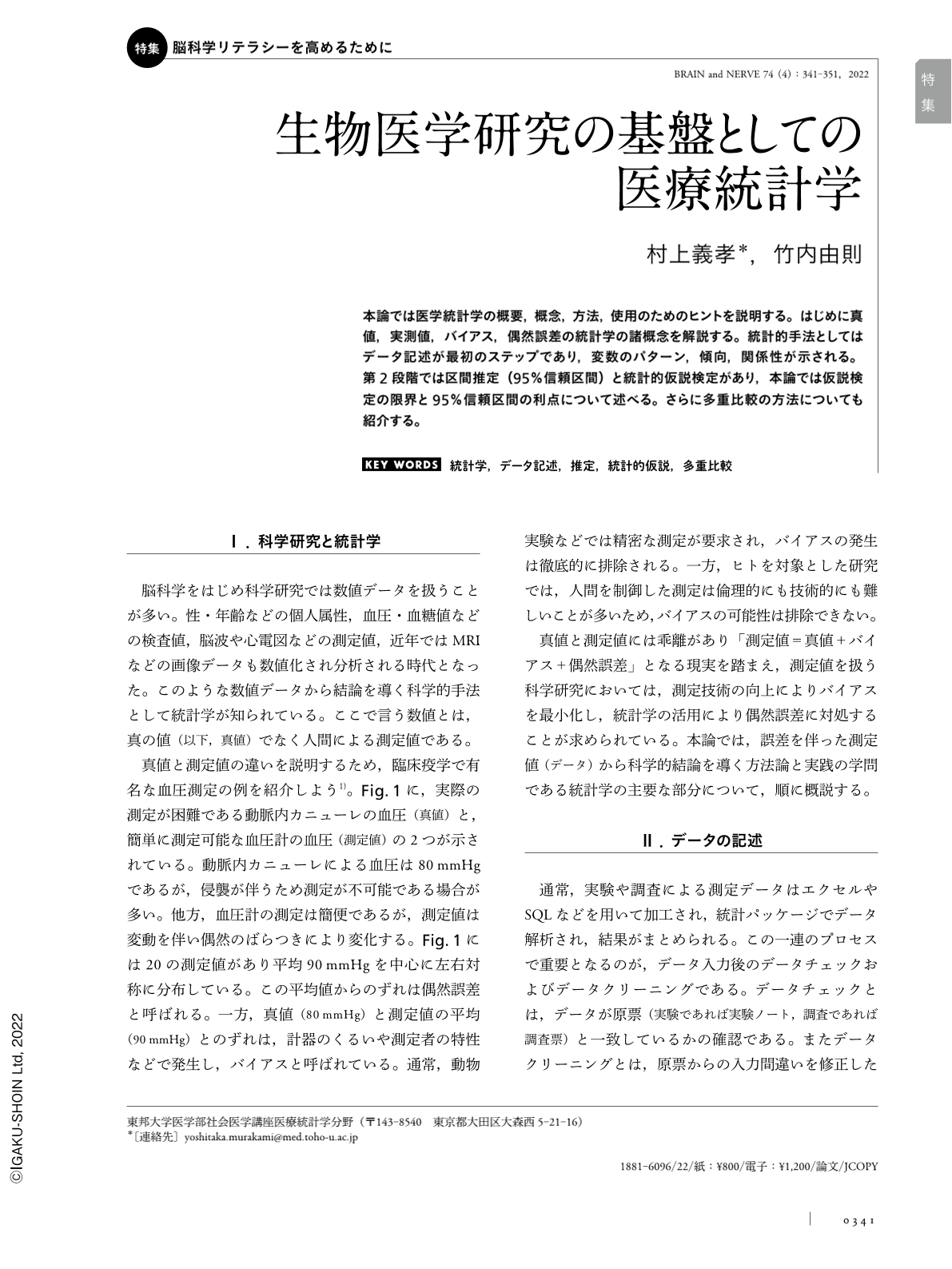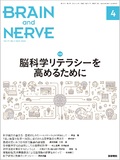Japanese
English
- 有料閲覧
- Abstract 文献概要
- 1ページ目 Look Inside
- 参考文献 Reference
本論では医学統計学の概要,概念,方法,使用のためのヒントを説明する。はじめに真値,実測値,バイアス,偶然誤差の統計学の諸概念を解説する。統計的手法としてはデータ記述が最初のステップであり,変数のパターン,傾向,関係性が示される。 第2段階では区間推定(95%信頼区間)と統計的仮説検定があり,本論では仮説検定の限界と95%信頼区間の利点について述べる。さらに多重比較の方法についても紹介する。
Abstract
Biomedical research commonly deals with measured values in humans, laboratory animals, and cells. These collections of measured variables, termed data, are analyzed to achieve scientific objectives. In this review, we present an overview of medical statistics, including its concepts, methods, and tips, for biomedical research applications. We first introduce various concepts of medical statistics, such as true values (that would never be seen in the real world), measured values (actual measurements), bias, and random error. Medical statistics deals with the removal of bias and control of random errors to generate scientific evidence. As a statistical method, data description (or data visualization) is the first step that analysts use to examine data. Data descriptions reveal the patterns, trends, and relationships of the variables. Subsequently, data are analyzed using interval estimation (95% confidence intervals) and statistical hypothesis testing to guide conclusions. Herein, we address the limitations of hypothesis testing and the advantages of using 95% confidence intervals. Moreover, we provide a summary of multiple comparison procedures that allow the simultaneous testing of two or more null hypotheses.

Copyright © 2022, Igaku-Shoin Ltd. All rights reserved.


